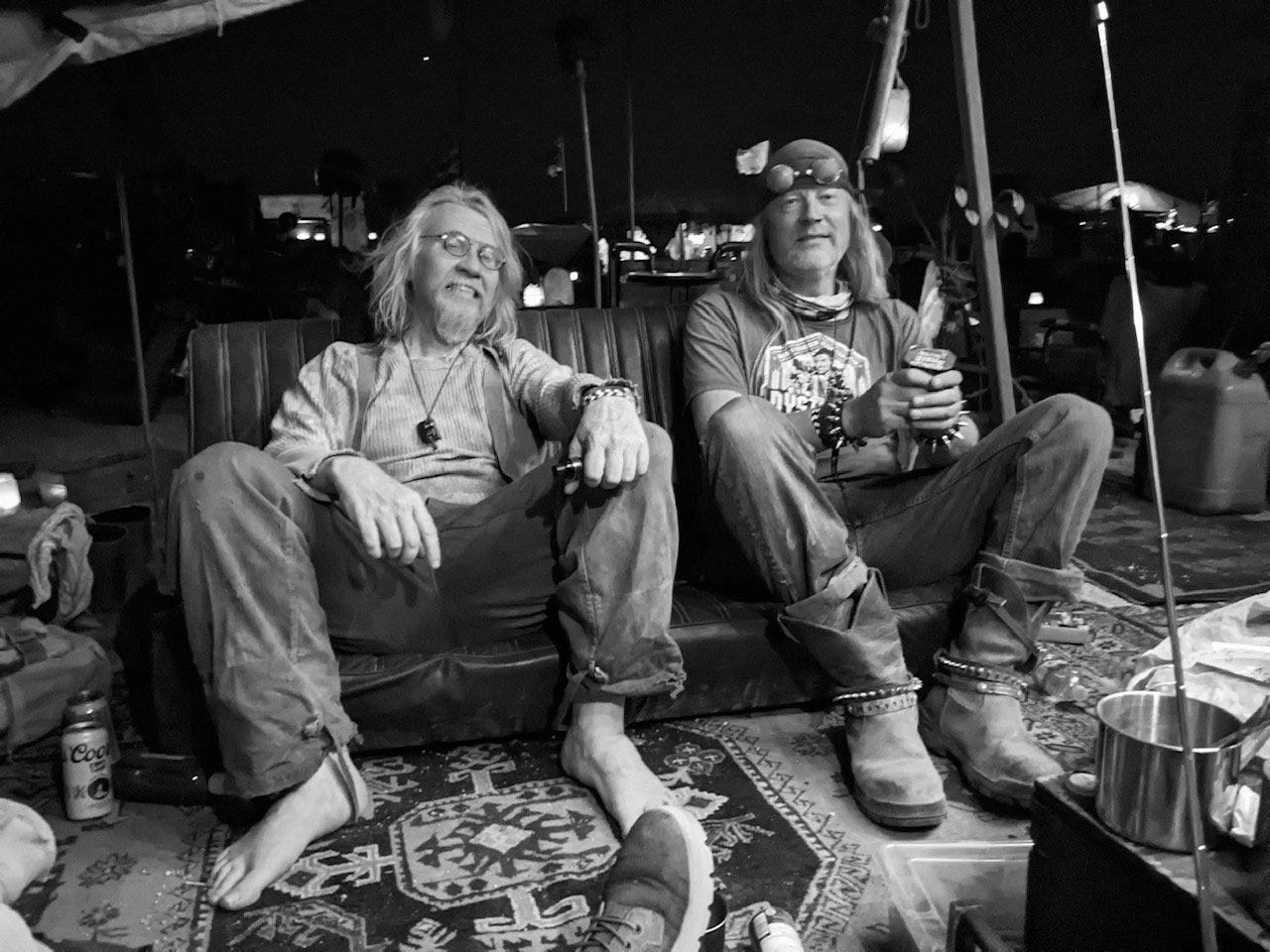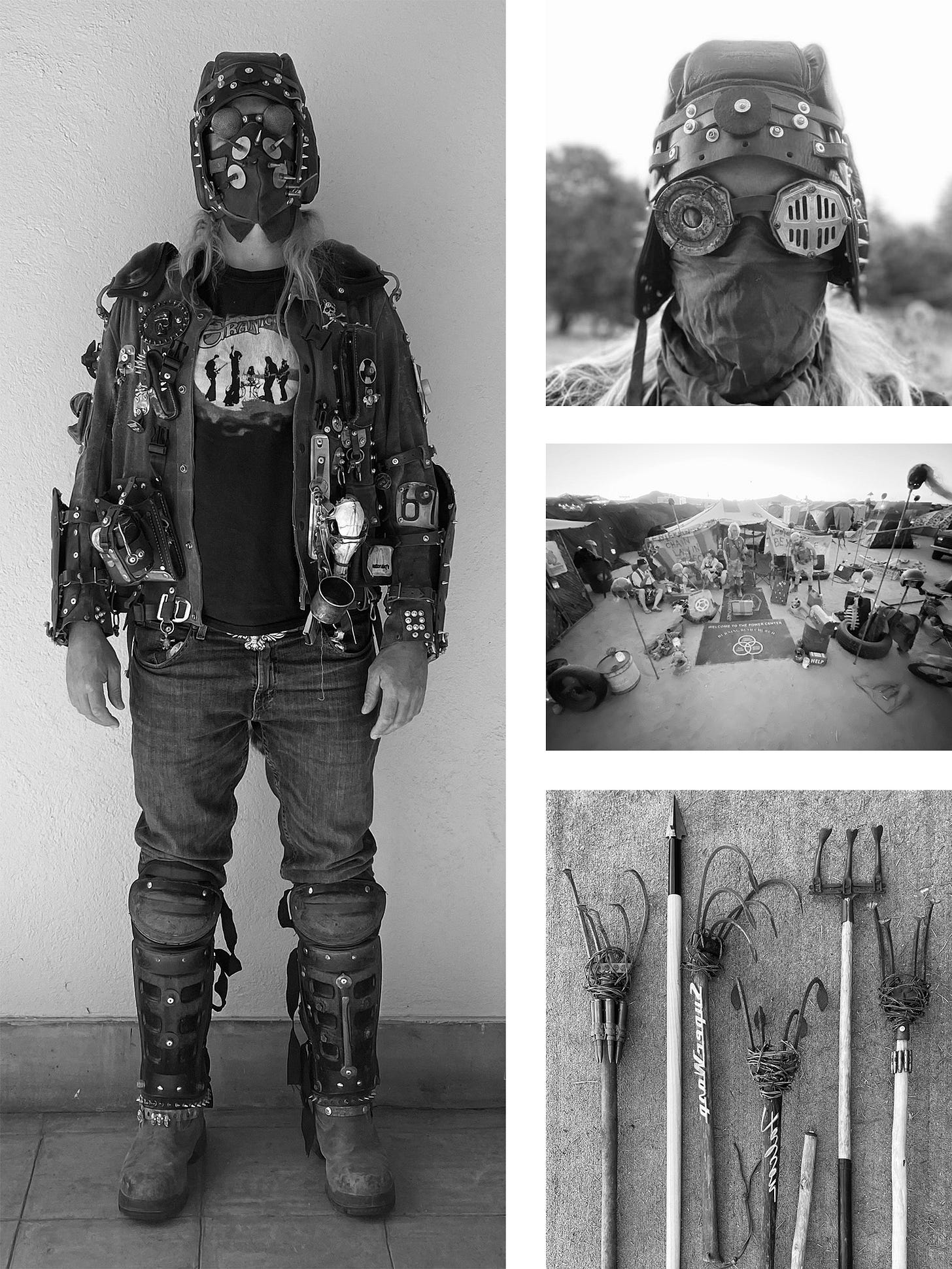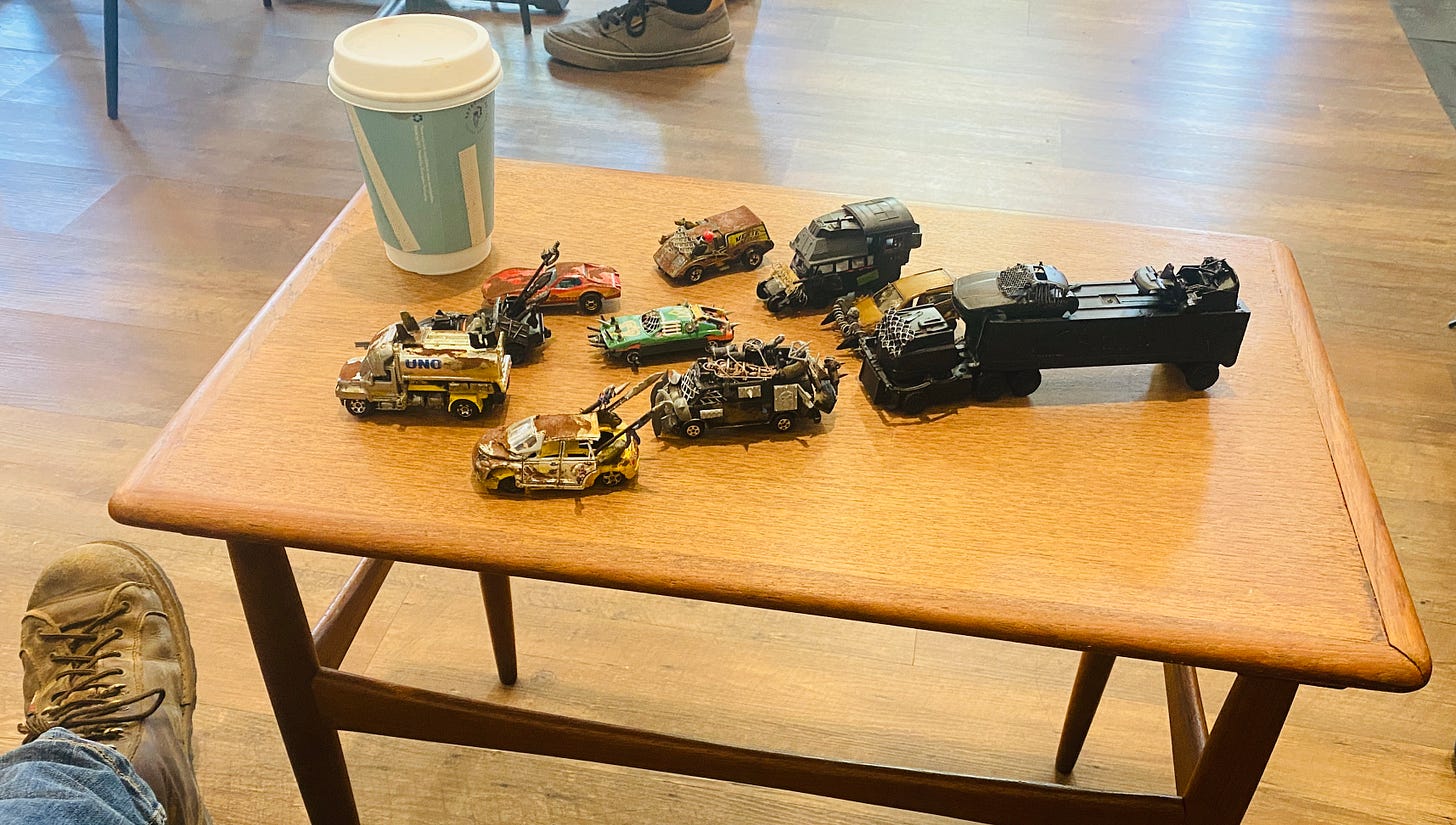The Wonders of the Wasteland
Looking beyond Burning Man, some Sebastopol folks find inspiration in festivals inspired by the Mad Max film franchise

You can’t always judge a book by its cover. Take me, for instance: I live in PeaceTown, have long hair, listen to the Grateful Dead and sometimes even wear a pair of sandals I hand-carved from an old tire I found in Berkeley 14 years ago. For all intents and purposes I’m a hippie. What the average person wouldn’t know from looking at me is that I’m also an ardent Mad Max fan; that is, I’m a fan of the post-apocalyptic genre — what insiders call a “wastelander.”
For those not in the know, the epic Mad Max movie saga features a rogue’s gallery of feral, leather-clad desperados, who battle each other on the world’s last roads in smoke-spewing, supercharged war machines. In the destroyed landscape of the future, cars symbolize the last vestige of power, and gasoline is more precious than water.
The series now spans 45 years and five films — Mad Max (1979), The Road Warrior (1981), Mad Max Beyond Thunderdome (1985), Fury Road (2015) and Furiosa (2024), which was just released at the end of May.
Over the course of those years, award-winning director and “mastermind” George Miller has steadily expanded the scope of the wasteland with each successive film, building a world that now includes whole imagined cultures and subcultures, warlords, heroes, villains, religions, tribes, fortresses, outposts, economies, slang, myths, vehicles and landscapes. In recent years it has even begun to champion environmentalism and women’s rights.
So successful has the franchise become that tens of thousands of Mad Max fans — er, wastelanders — now exist throughout the world, including in Sebastopol and west county. With the debut of Fury Road in 2015, interest in the series reached new heights and post-apocalyptic festivals began to gain traction as far away as Europe and Australia.
The largest event and the apotheosis of all wasteland activity, Wasteland Weekend, began in 2010. Held for a week every October in California’s scorching Mojave Desert, it now attracts roughly 5,000 people annually. About 20 of those wastelanders live in Sonoma County.
Sebastopol resident Daniel Solnit, 66, has attended five Wasteland Weekends to date. He used to be a Burner, but at some point the sheer size of Burning Man began stifling the creativity that initially drew him to the scene. The much smaller Wasteland Weekend community still exudes the raw, collaborative inventiveness that he values.
“In the wasteland, everyone’s on the same page in terms of creating a collective experience,” he said. His tribe, Clan of the Boltcutters, is based on a matriarchal Fury Road tribe called The Vuvalini. “Basically they’re feminists,” Solnit said. “They’re fighting the patriarchal warlords. They’re a bunch of badass old ladies on motorcycles.”
A political activist by inclination, he attempted to unionize a small army of fascist praetorian guards known as “War Boys” at Wasteland Weekend 2022. The act of political theater proved amusing, if unsuccessful.
My own interest in the Mad Max franchise began in my teen years in the early ’80s. I first attended Wasteland Weekend in 2012 and co-founded a cannibal biker gang called Machine Army in 2014. I’ve attended about 20 week-long post-apocalyptic festivals since. As I am creative by nature and prone to long fits of crafting madness, the wasteland scene is a sure fit for me.
My primary costume piece is a used leather metalworker’s jacket I scored at a yard sale for 50 cents. After spending weeks riveting dozens of leather straps, hooks, rings and pieces of found scrap metal onto it, then attaching knives, skulls, army surplus pouches and pieces of plastic armor to it, it was successfully transformed into a visually arresting — if heavy — battle jacket.
I once wore the clanking contraption into a room filled with family members, who greeted me with total silence as they ogled it. After a long pause, my late father said, with gravity, “That’s quite a jacket you have there, Marko.”

The genre continues to attract new fans, many of them from younger generations. I crossed paths with Forestville resident Dakota Sumner, 30, on May 24, at the debut of the most recent Mad Max movie, Furiosa.
A group of local wastelanders had gathered at the theater, most in costume, one with a genuine themed VW baja battle buggy, for a photo shoot before watching the film. Sumner and his friends, unaware of the gathering, had brought their own costumery to wear to the movie.
“I was having second thoughts in the parking lot,” Sumner said, “until I saw someone walking by with a license-plate Ronin helmet, and I realized I was in the right place. It was a great surprise!”
Fury Road, Sumner’s intro to the Mad Max world in 2015, remains his favorite of the movies. The wasteland genre parallels and complements his ongoing interest in cosplay and sci-fi conventions. The creativity and crafting also interest him, as do recycling and upcycling.
In fact, Furiosa inspired him to begin a new creative project the same night he saw it: That of “kit-bashing” together wasteland war rigs out of his collection of yard-sale Hot Wheels. In the weeks since, he’s cobbled together an impressive fleet of tiny machines which he uses as game pieces in a role-playing game called Gaslands.
Perhaps Wasteland Weekend lies in Sumner’s near future.

The wasteland world is bleak and unforgiving, but also beautiful in its own way, filled with machines and costumes exquisitely hand-crafted by artisans out of recycled and upcycled Old World detritus. A highway sign becomes a prized shield, camera lens parts become goggle eyepieces, a toilet seat and an exhaust pipe become a flame-throwing guitar, and the battered shell of a classic car takes on new life as a warlord’s battlewagon with two custom-fabricated engines and oversized tractor tires. As creator George Miller himself once said, “Just because it’s a wasteland doesn’t mean that people don’t make beautiful things.”
In its simplest form, the Wasteland is the modern equivalent of the Wild West, with motorcycles and gasoline replacing horses and water, and marauders replacing bandits. Freedom, adventure and a certain level of giddy lawlessness remain the most basic attractions.
I like to imagine there is a deeper reason for the wasteland’s broad appeal, though: That in today’s dystopic world, where the purposeless plight of the anonymous Amazon warehouse worker has become a dominant trope, the wasteland allows us all a level playing field in which to imagine ourselves actually building a brighter, more meaningful future.
But philosophizing aside, perhaps the most telling reason I’m attracted to both Dead and Company concerts and Wasteland Weekend is that I’m equally comfortable wearing my hand-carved tire sandals to both.


